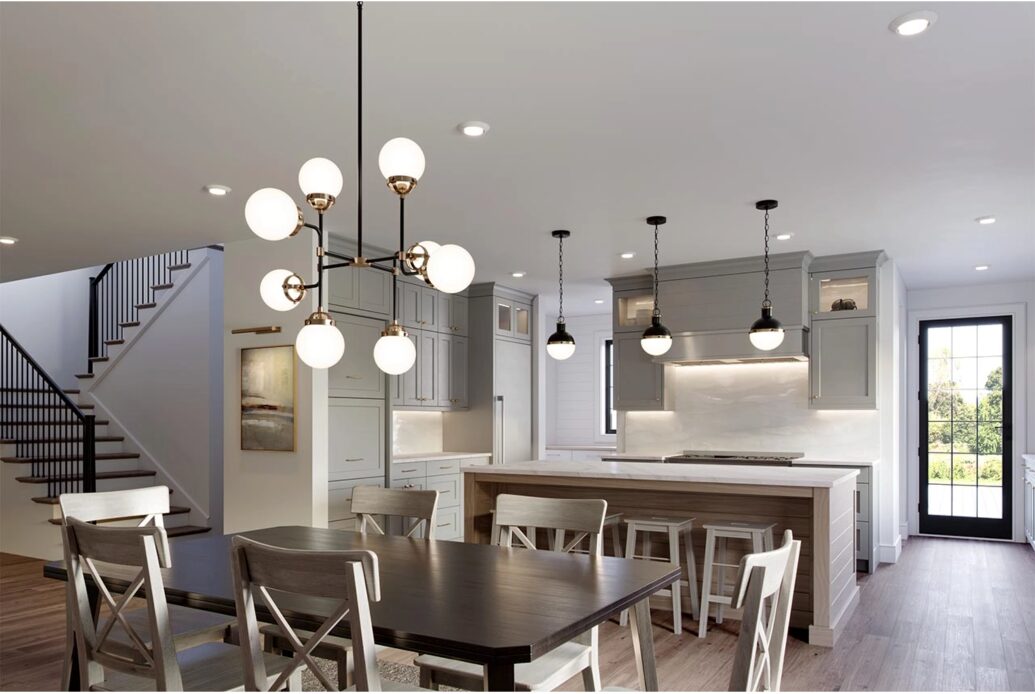When it comes to ceiling lighting, two options stand out for their beauty and functionality: pendant lights and chandeliers. While they might seem similar at a glance, these fixtures offer different styles, lighting effects, and purposes. Choosing between them—or using both strategically—can greatly enhance your interior design.
Let’s break down the differences, strengths, and best use cases for pendant lights and chandeliers, helping you decide which is ideal for your home.
What Are Pendant Lights?
Pendant lights are single fixtures that hang from the ceiling by a cord, chain, or rod. They’re typically smaller than chandeliers and are often used in multiples for visual balance and focused lighting.
Key Features of Pendant Lights:
- Compact and Versatile: Ideal for kitchens, reading nooks, or bathrooms.
- Modern to Classic Styles: Available in industrial, boho, rustic, and contemporary designs.
- Task-Oriented Lighting: Perfect for areas where you need direct light, like kitchen islands or desks.
Pendant lights are perfect for functional areas but can also add a decorative touch when used creatively in clusters or patterns.
What Are Chandeliers?
Chandeliers are ceiling-mounted lighting fixtures with multiple arms or branches, often holding multiple bulbs. Traditionally associated with luxury and elegance, modern chandeliers now come in various styles to match any decor.
Key Features of Chandeliers:
- Bold and Decorative: Designed to be a centerpiece.
- Ambient Lighting: Great for lighting large or formal spaces.
- Varied Styles: From classic crystal and iron to sleek geometric forms.
Chandeliers work best in open spaces with higher ceilings, such as living rooms, dining rooms, or foyers.
Pendant Lights vs. Chandeliers: Which One Should You Choose?
- Room Size and Ceiling Height:
- Pendant Lights are perfect for small to medium-sized rooms with standard or low ceilings.
- Chandeliers need more space to breathe and typically look best in rooms with high ceilings.
- Purpose of the Light:
- Pendant Lights excel in task lighting—focused and direct.
- Chandeliers are better for general, ambient lighting and a decorative wow factor.
- Style Preferences:
- Want something minimal, modern, or industrial? Go with pendant lights.
- Prefer something dramatic and classic? Chandeliers make a stronger statement.
- Budget Considerations:
Pendant lights usually cost less than chandeliers, especially if you’re installing multiple small fixtures instead of one large feature.
Combining Pendant Lights and Chandeliers
You don’t have to choose just one! In fact, many interior designers combine both in layered lighting plans for a rich, well-lit atmosphere.
Design Ideas:
- Kitchen + Dining Room Combo: Pendant lights over the kitchen island and a chandelier above the dining table create separation and function in an open-plan space.
- Living Room: A chandelier can anchor the center, while pendant lights illuminate corners or reading zones.
- Bedroom: Use a statement chandelier for ambiance and pendant lights over the nightstands for practical, space-saving task lighting.
Final Thoughts
Both pendant lights and chandeliers bring unique advantages to your space. Pendant lights are flexible, functional, and stylish, while chandeliers offer grandeur and ambient beauty. Whether used separately or in combination, they can dramatically enhance your home’s aesthetics and lighting performance.
By understanding your room’s needs, ceiling height, and personal style, you can choose the perfect fixtures—or mix and match—to make your space shine.





























